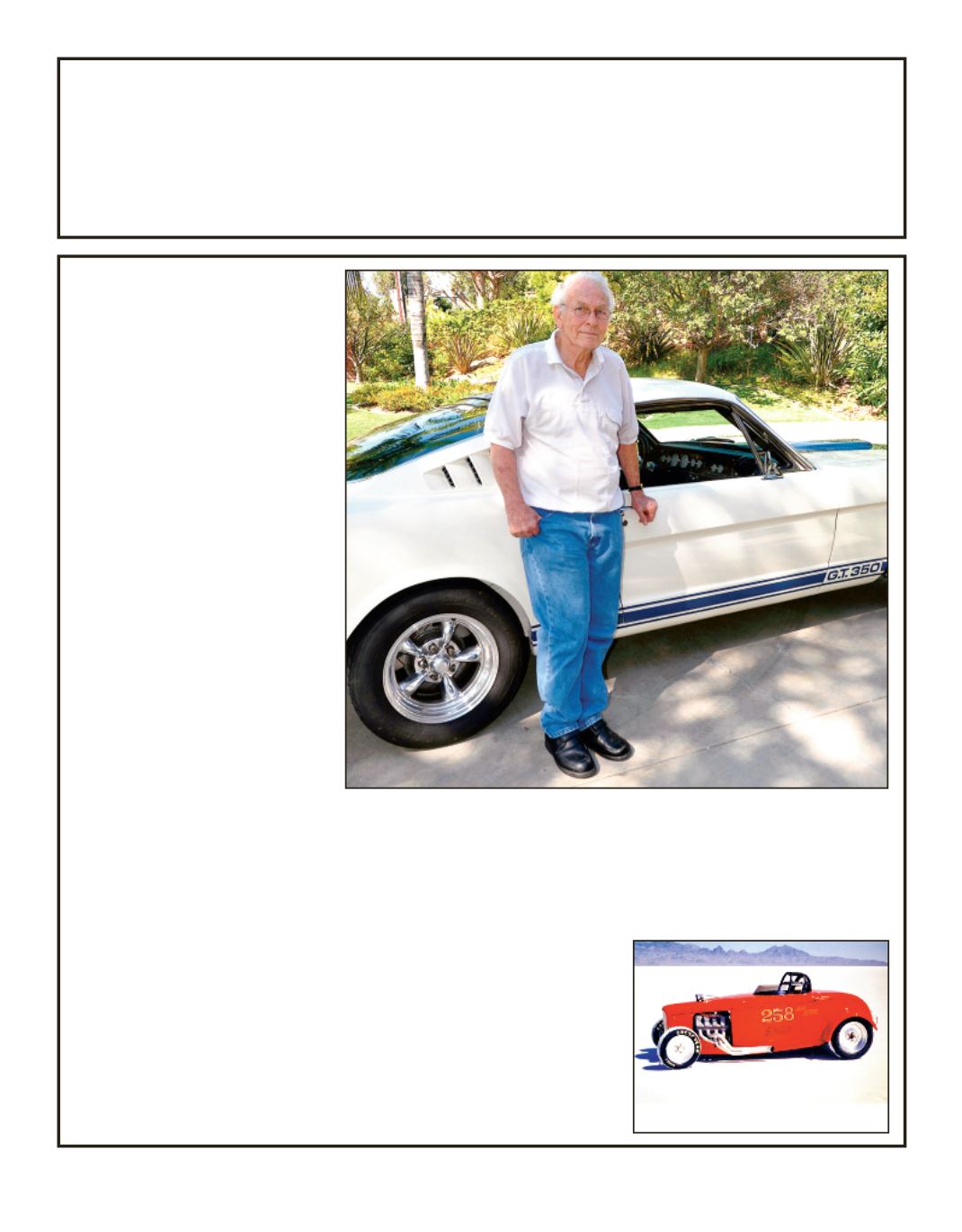

The SHELBY AMERICAN
Fall 2016 86
Traco reputation. Customers like
Roger Penske and Bruce McLaren
were at the head of the line.
When the rear engine revolution
took place, Traco was in the right
place at the right time. Through the
later 1960s, their engines were
everywhere: USRRC, Can-Am, For-
mula 5000 and Trans-Am. Traco grew
because of the demand and a steady
stream of engine builders and fabrica-
tors moved in and out of their shop. A
good number came from Shelby Amer-
ican. Their employees learned from
the masters who never lowered their
standards.
Jim eventually moved Kanab, Utah
where he continued to work every
day. People restoring race cars
sought him out for his magic touch.
He refused to slow down and on Feb-
ruary, 2016 he took a fall off a ladder
and never regained consciousness.
He was 96.
FRANK CURRIE
March 2, 2016
The elders of the hot rod world
are reaching their 80s and 90s and
are passing away, and with them go
the clear remembrances of the world
they both inhabited and created...to
be replaced by foggy recollections of
those who came after them. Frank
Currie was born in Anaheim, Cali-
fornia in 1929. By the time he was in
his twenties he was in the middle of
the Southern California hot rodding
culture. Currie was involved in drag
racing, land speed record cars, off-
roading and desert rallies, muscle
cars and street rods.
As a young man he enjoyed the
merging of automobiles and speed.
He started with a Model A Ford,
modifying it for speed runs on the
Muroc and El Mirage dry lakes as
well as running on local dirt tracks.
He was intrigued by anything with
an engine and during the Korean
War he found himself in the Air
Force, stationed in Oklahoma and
working as an aircraft mechanic.
The experience stayed with him
when he returned to Anaheim and
he went to work for Taylor-Dunn, a
company that manufactured small
farm trucks. He specialized in rear
end differentials which could be
adapted to these trucks and by 1959
he and his wife established Currie
Enterprises. The business grew rap-
idly, eventually occupying a 40,000
square-foot facility producing modu-
lar rear ends for industrial and com-
mercial applications.
He eventually felt the gravita-
tional pull of hot rodding and before
long he was providing Ford nine-
inch rear ends to local speed shops.
Over the years company records re-
vealed that they sold more then
300,000 rear ends until 2005. Then
they began fabricating differentials
from scratch and expanded to supply
the off-road market. Currie turned the
company over to his sons and retired
in 1985.
Retirement merely freed Currie
up to do what he enjoyed most: playing
with cars. He built a ‘32 Ford highboy
to run at Bonneville. The car was pow-
ered by a Boss 429 “Shotgun” engine
his sons had given him as a birthday
present. It was bored out to 709 cubic-
inches and produced 930 horsepower.
He drove the car to the salt flats,
swapped wheels and tires and in-
stalled a roll cage. He turned 205 mph
and then removed the cage,
swapped the street wheels and tires
again, and drove the car to Detroit.
He holds the record for the fastest
car ever to be driven to and from
Bonneville under its own power. The
car was named “Hot Rod of the


















